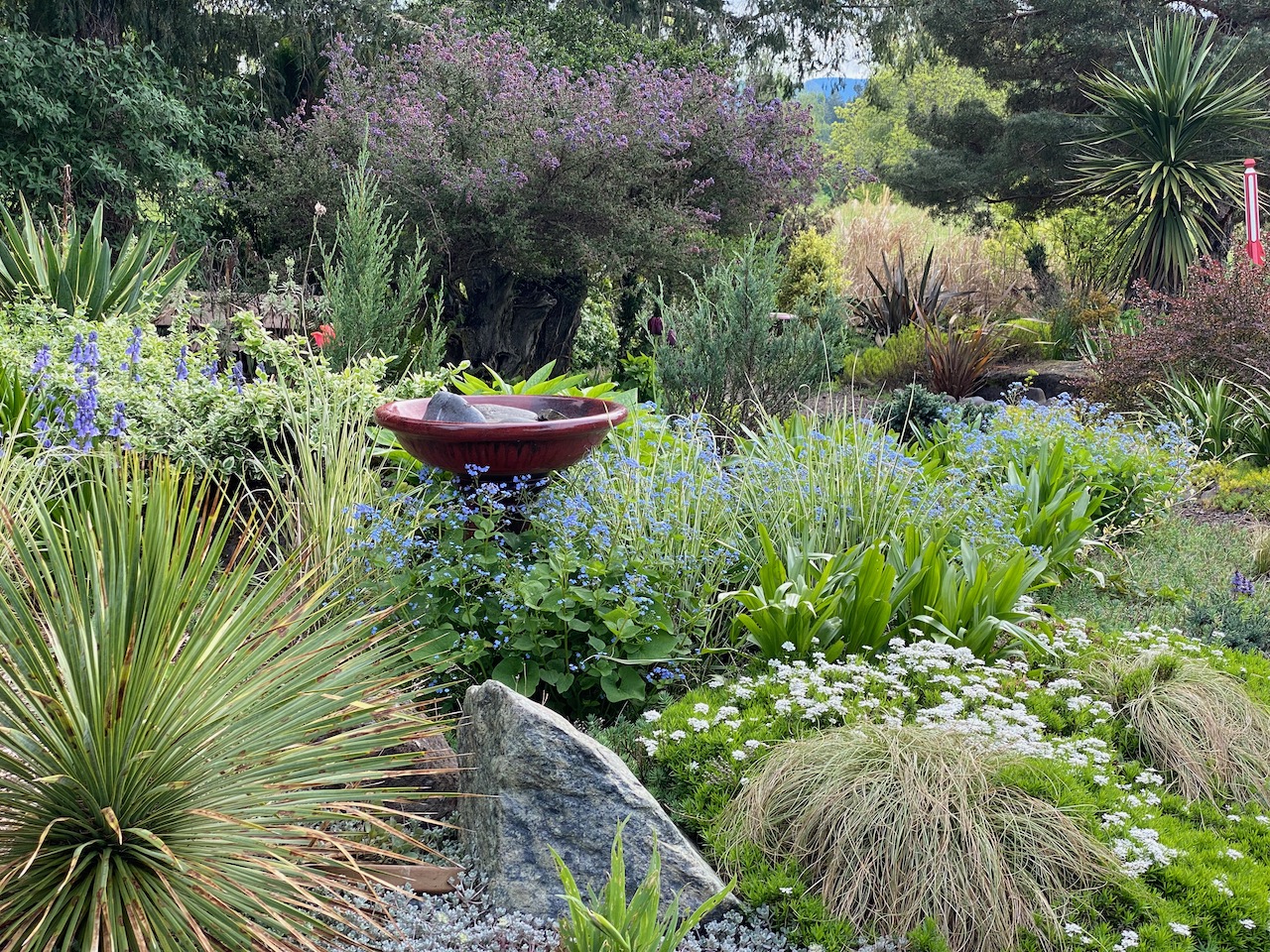
Showcasing nearly 300 cold-hardy perennial plant varieties and designed using the “Seven Principles of Xeriscape” as a foundation, the Xeriscape or “Dry Garden” stands as a testament to sustainable, water-free landscaping.
History
The Xeriscape Garden was first established in 2004 by four DCMG Volunteers: Anne Waddington, Irene Thomason, Judi Danielson and Gloria Amorde. Irene is memorialized with a concrete bench in the lower section of the Xeriscape Garden and Anne has been commemorated with her own memorial section of the Discovery Garden.

In 2013, MG Geoff Puryear was asked to take over the leadership of the space. Before 2013, the Xeriscape Garden was regularly irrigated with the rest of the Discovery Garden. This resulted in a display garden of “drought tolerant” plants that wouldn’t ever experience any naturalistic drought.
No More Irrigation
In the Spring of 2013, The Xeriscape Garden was shut off from the Discovery Garden irrigation system. This was the first step in creating an educational display of plants that actually survive the naturally hot, dry summers of the Umpqua Valley.

As the 2013 season progressed into Summer, some of the plants started to show signs of stress caused by a lack of supplemental water. This meant that although the plants were “drought tolerant” according to the textbooks, they were not planted in the right place in the garden to actually survive our annual dry season without regular irrigation.
Over the course of three years (2013-2016), hundreds of new hardy perennials were planted. The existing plants were removed or transplanted to more suitable locations. Many plants were trialed and then moved to a new spot or removed entirely based on their ability or inability to thrive over that time. Ultimately, the only original plants from 2004-2011 that are still in their original places are a few large shrubs and trees.
In 2014 the Xeriscape Garden was expanded all the way to the western edge of the garden, removing all turf grasses and creating a place for a picnic table, Irene’s memorial concrete bench, and “The Bog”. This area also served as an informal experiment of the use of wood chips as growing media/mulch.
The Rockery
The first big project to reinvigorate the Xeriscape Garden was the establishment of a new rockery display of succulents and other low growing plants at the front of the garden. Large boulders were relocated with the help of a tractor, and more smaller rocks were brought in to create a multi-dimensional set of display beds.
The soil was created with a mix of pumice sand (slough), garden compost and 1/4”- gravel, then topped with a layer of various decorative gravels as mulch. (Gravel makes for a poor choice of mulch in retrospect, weeds readily sprout in gravel.)


The star specimen of the rockery is an Agave montana, planted in 2014. Originally planted as a 10″ wide rosette, it has quickly grown to over 3 feet in diameter. Agave Montana is a native of Mexico that only flowers once in its lifetime (monocarpic) and it will probably bloom sometime between 2028 and 2040. After blooming, the agave’s rosette will die, leaving only seeds or baby plants on the flower spike to start the decades-long cycle again. The rockery features three individual rosettes, Agave montana does not naturally set “pups”.








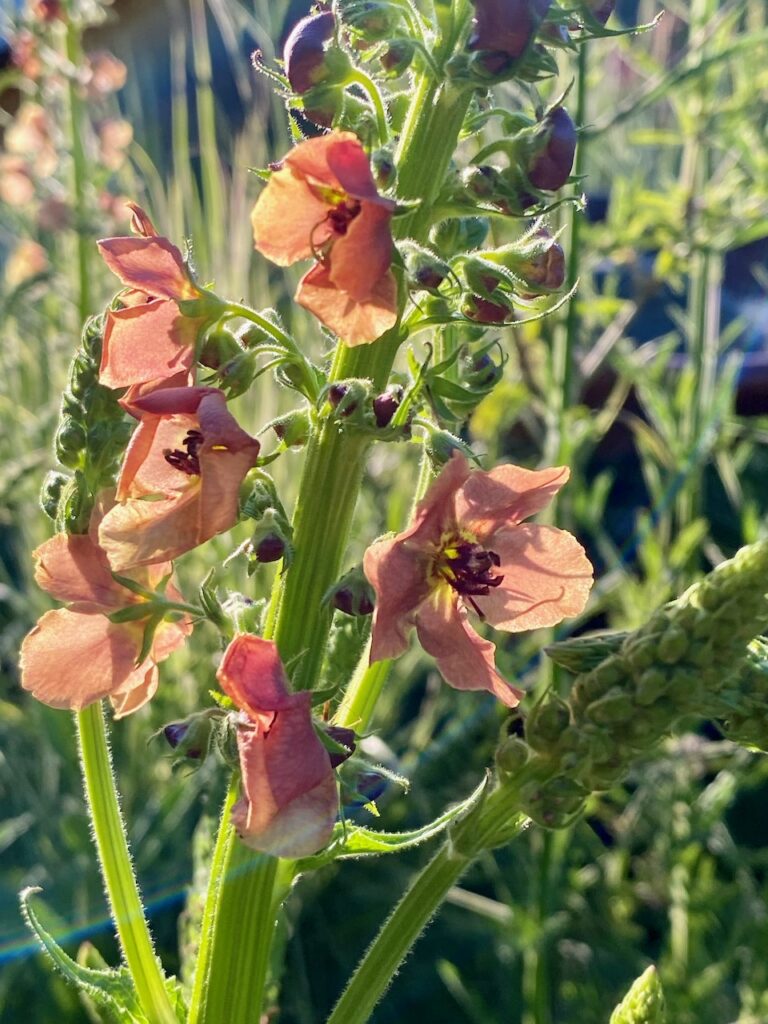

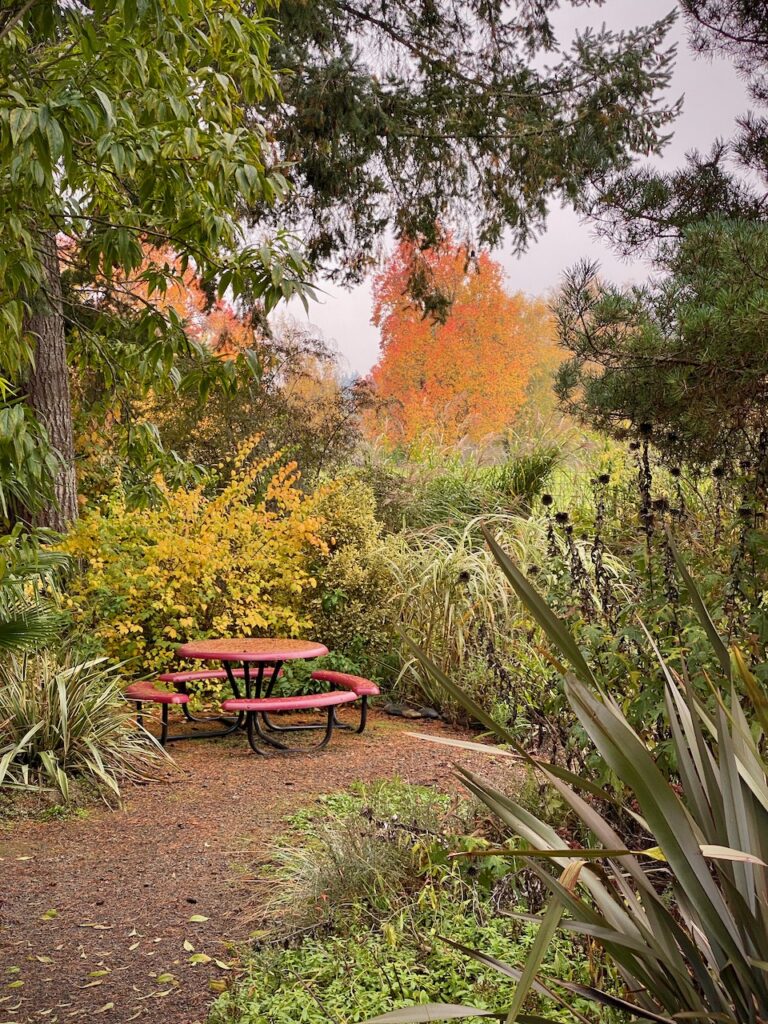


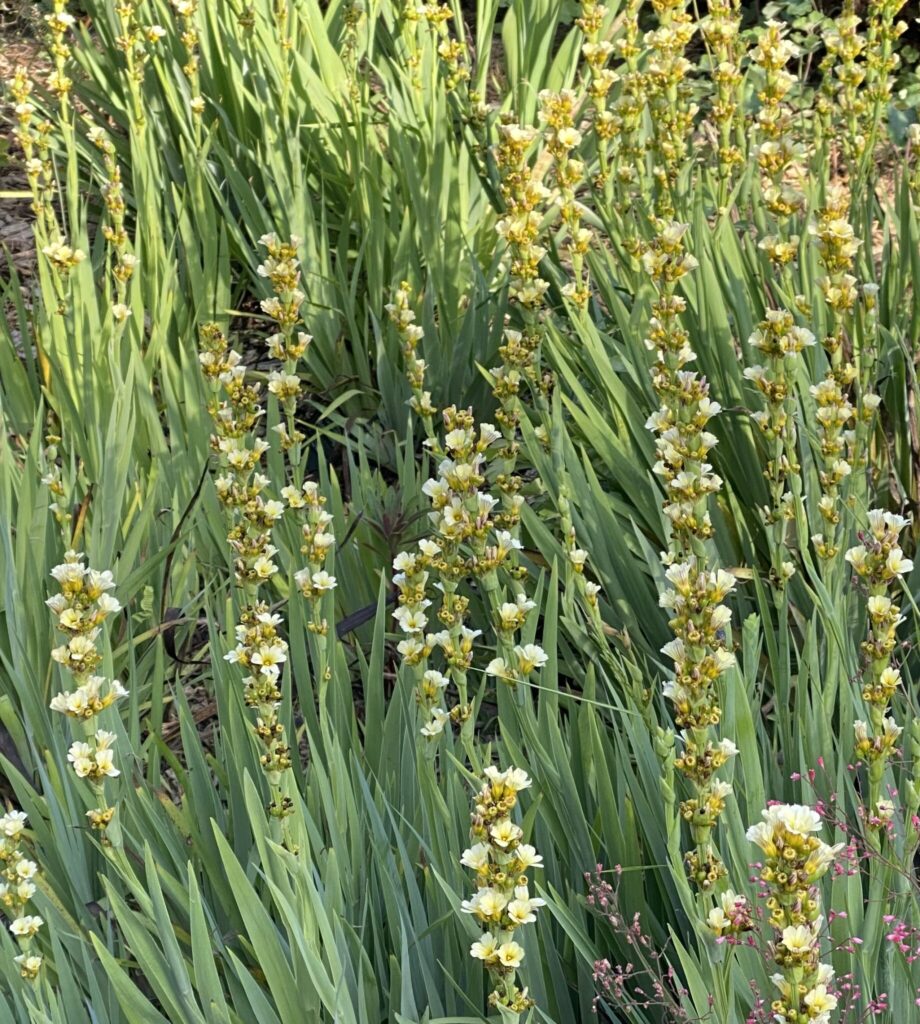
The Xeriscape Garden is a display of hardy perennials that can easily be obtained from regular plant nurseries, however some specimens have been added over the years that may be difficult to find locally. Propagations of some of these plants can be found at our annual Master Gardener™ Plant Expo in May.
Plant Selection
The Xeriscape Garden is heavily planted with both herbaceous and evergreen perennials, shrubs, and trees for year-round interest. There’s always something blooming.
Plants are chosen for their ability to be low-maintenance, selecting for their:
- Mature size: fitting in the space without regular pruning or hedging as a mature plant.
- Naturally clean physical appearance: looks good without regular deadheading or pruning.
- Drought tolerance: the ability to establish and survive without supplemental irrigation.
- Disease resistance.
Selecting for suitable plant characteristics when choosing plants should be paramount over selecting for purely aesthetic reasons.
When selecting plants for a sustainable garden bed, being mindful of the plant’s needs is important. Selecting a plant purely because it would be visually appealing will only last so long if its water needs are not adequately met or it overgrows the location. When shopping for plants check the tag for water, sun, and soil requirements before you buy.
Planting Oregon Natives
The Xeriscape Garden features a wide variety of Oregon native plants. The hedge of Douglas Fir trees along the southern edge of the garden makes for the perfect place for many popular Oregon native shrubs, trees, and perennials found in our local wooded areas. Other parts of the garden with more well drained soils and increased sun exposure feature natives that would more often be found in similar situations like Coyote Mint in the rockery, or checkermallow growing throughout the open areas of the garden. Growing natives can be easy, fun and rewarding, but making sure they’re planted in the right place is the key to success. Oregon Native Plant List

Oregon Grape Berberis aquifolium
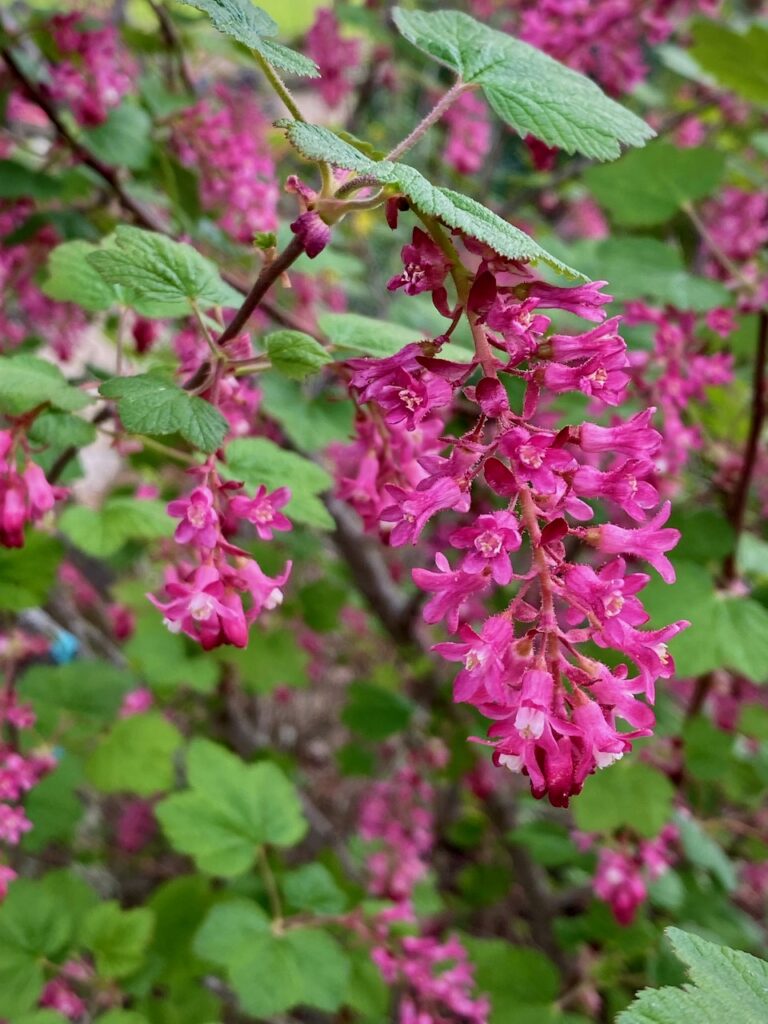
Flowering Currant Ribes sanguineum

Flowering Currant Ribes sanguineum and
Oregon Grape Berberis aquifolium
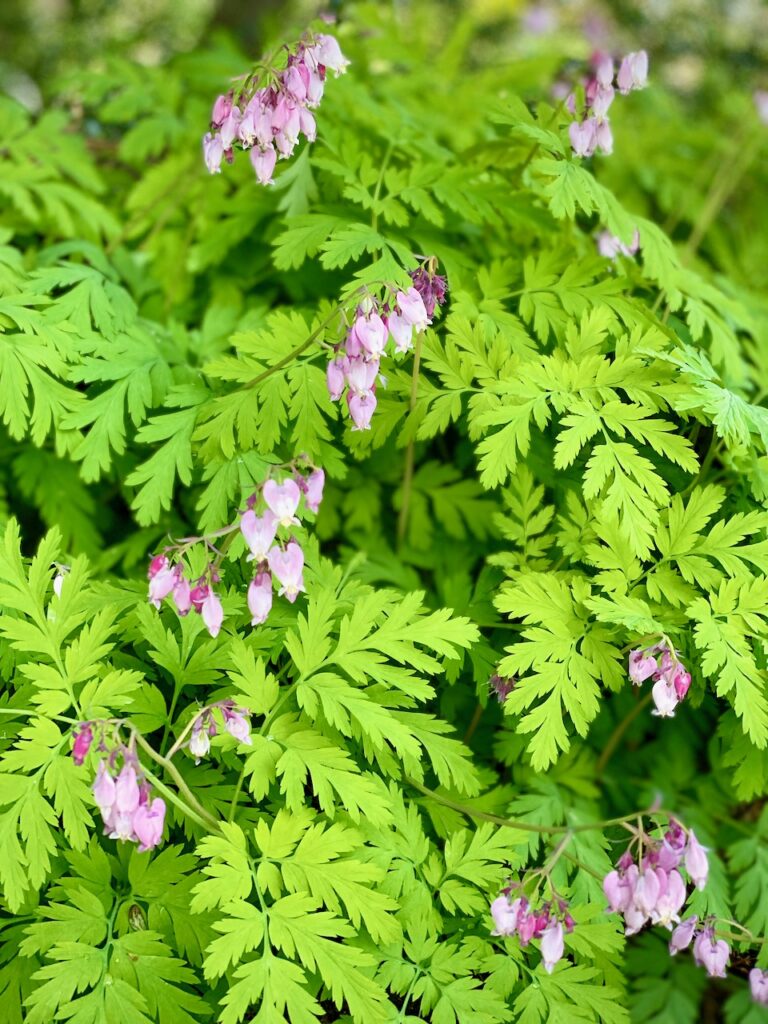
Bleeding Heart Dicentra formosa

Bleeding Heart Dicentra formosa

Bleeding Heart Dicentra formosa

Oceanspray Holodiscus discolor
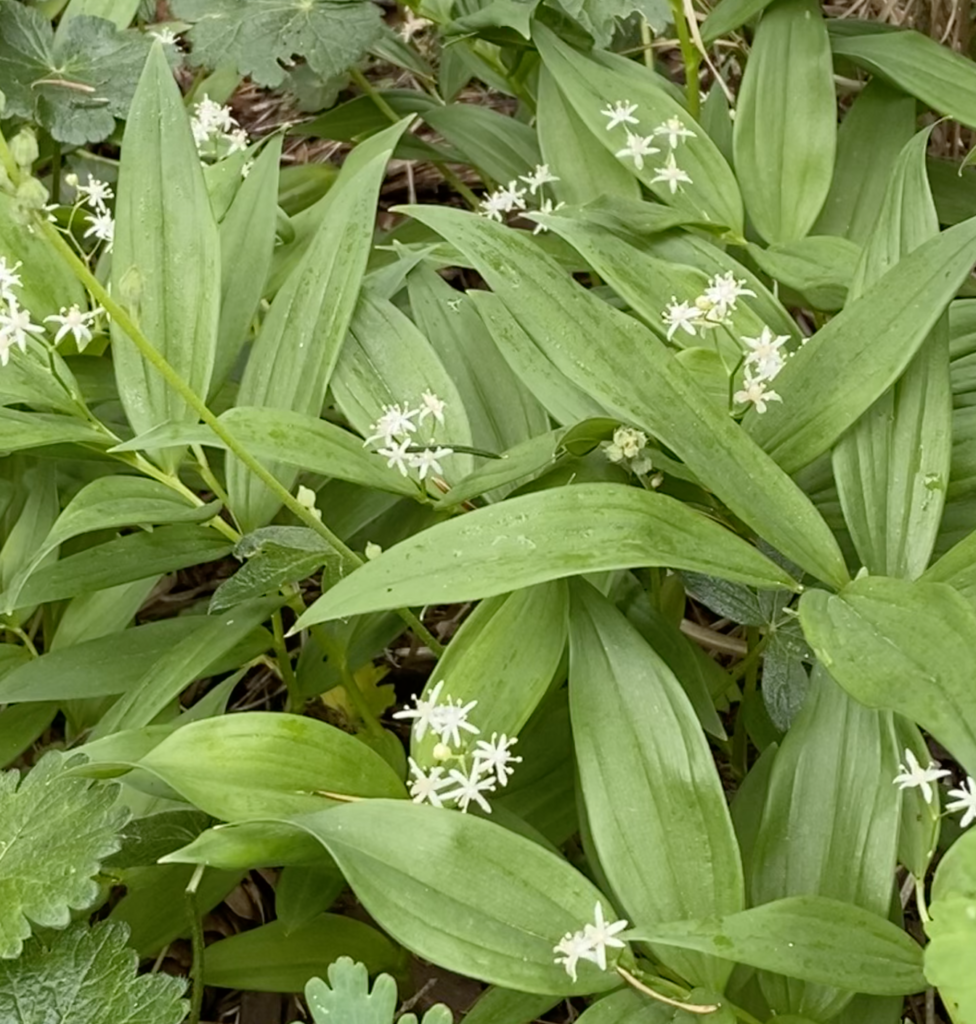
Star Lily
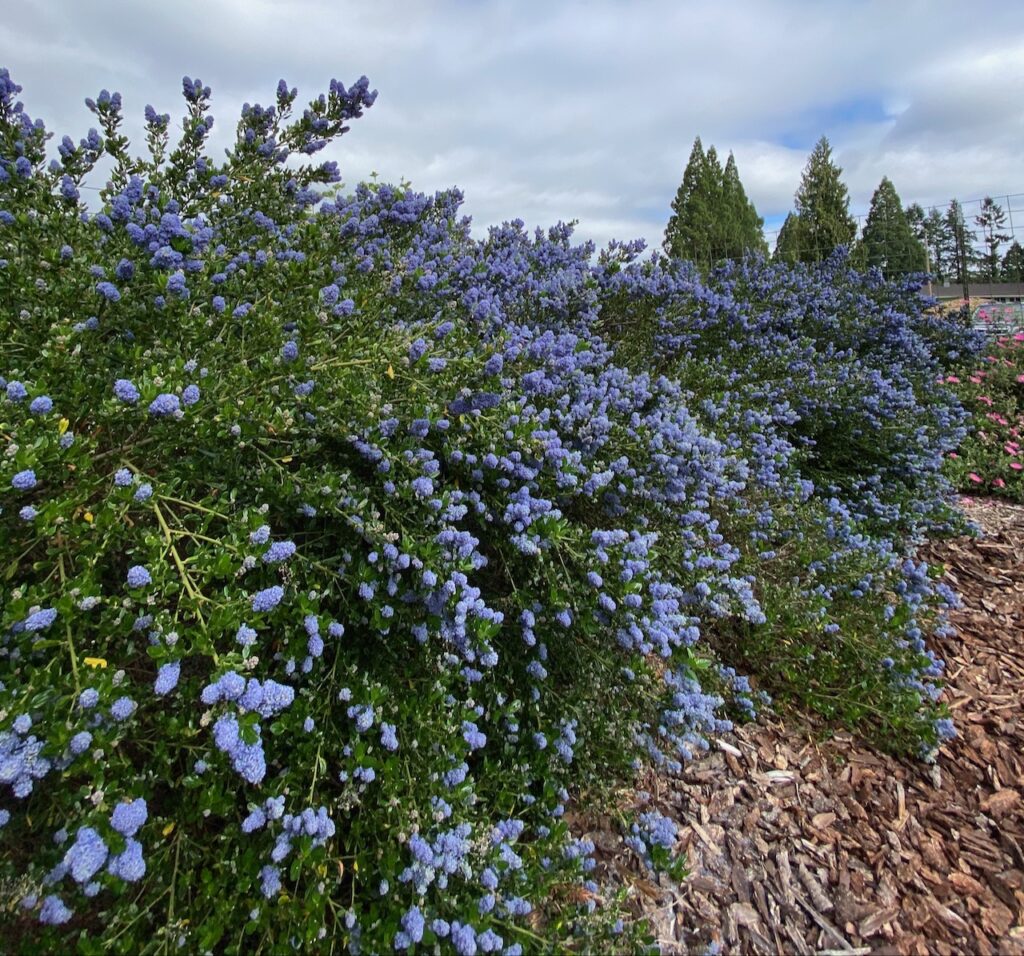
Ceanothus thrysiflorus
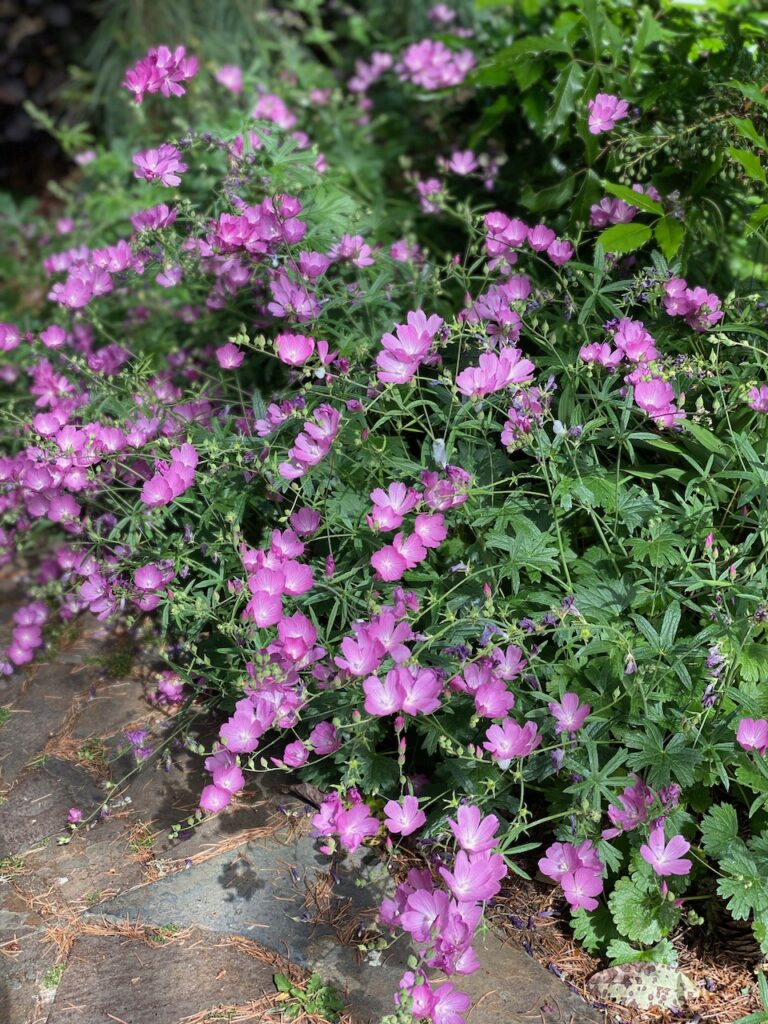
Checkermallow

Sedum Spathulifolium
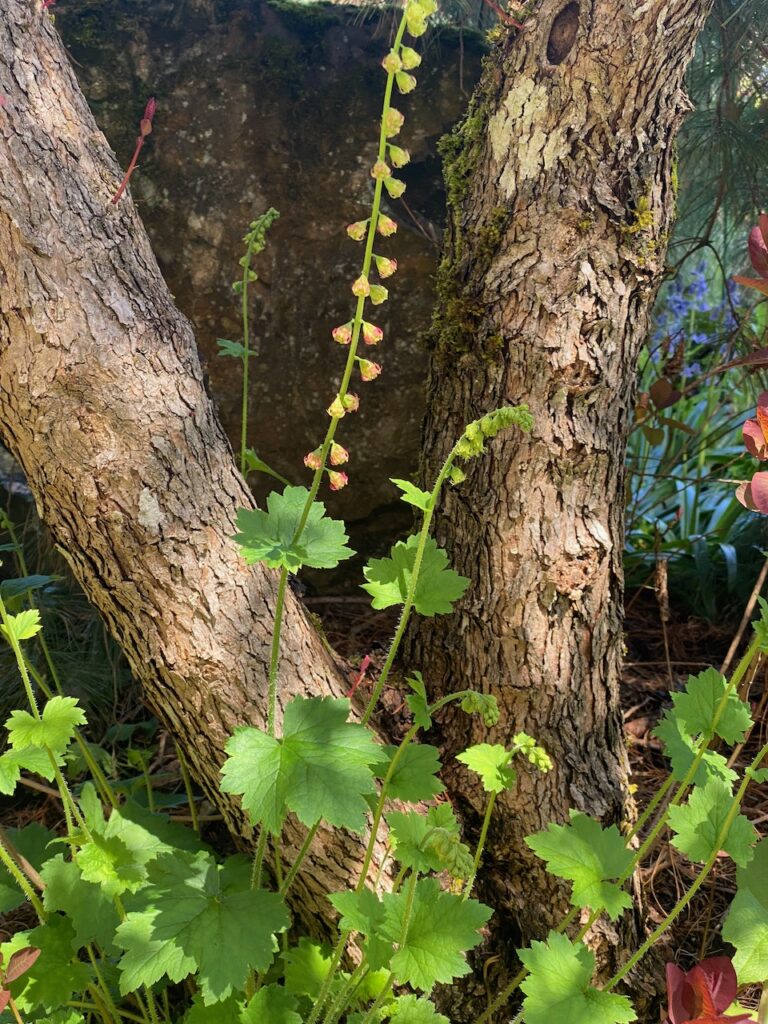
Fringecup Tellima grandiflora
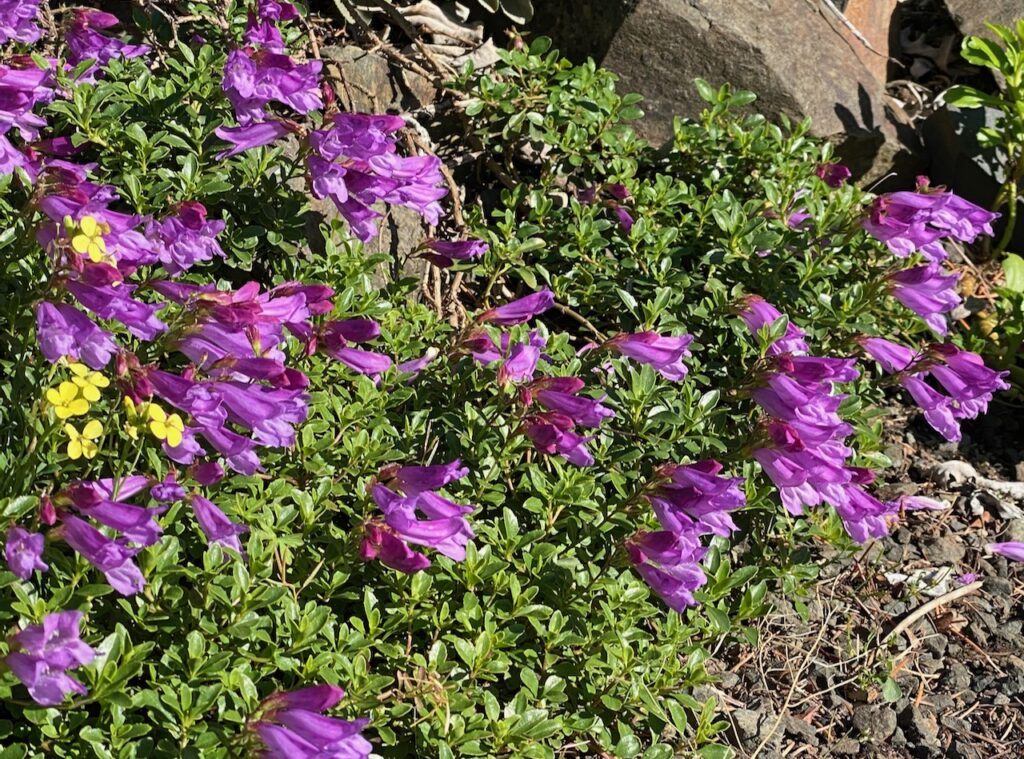
Penstemon davidsonii var. menziesii

Blue Eyed Grass Sisyrinchium bellum
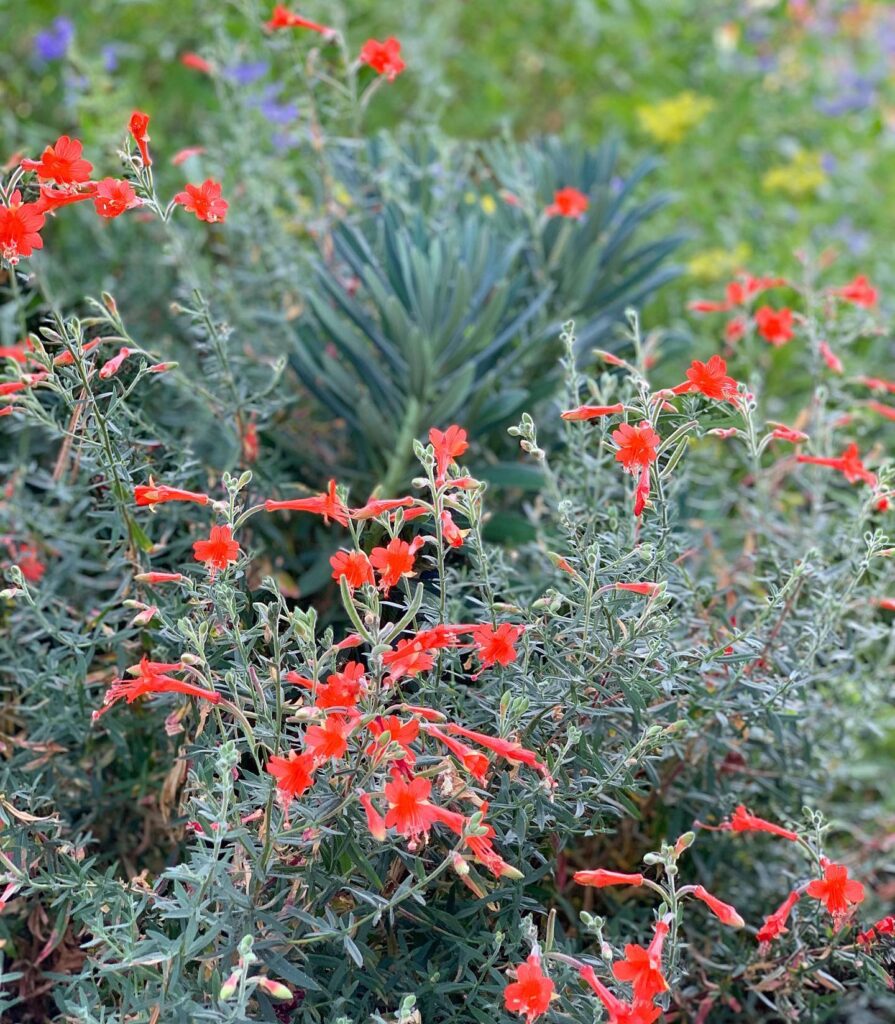
California Fuchsia

Lupinus rivularis
Established and Drought Hardy

The goal of the Xeriscape Garden is to grow plants that can establish and be fully hardy to the drought; surviving without any irrigation during the summer.
New shrubs or trees may require water for the first three growing seasons, however planting during the wet season, using adequate mulch, and choosing the right plant for the right place can lessen the time it takes for perennials to establish.
To increase drought hardiness, soak new plantings thoroughly at the root zone, allowing the water to go deep into the soil, thus encouraging roots to go down deep as well. If the top layer of the soil is dry, soak it thoroughly before adding mulch.
Fall-planted bulbs like daffodils and tulips are generally easy to establish in our climate of wet winters. These bulbs get the moisture they need from the rain and go dormant with the drought. Bearded Iris, although not a true bulb, will also generally establish quickly if planted in the Fall.

Irrigation and Wastewater Mitigation
The Xeriscape Garden receives no irrigation during the dry season relying solely on natural rainwater. The majority of the Discovery Garden is irrigated two to three times a week during the dry season.
The irrigation system of the Discovery Garden is fed by the North Umpqua River. To flush the system of any sand or particulates that could create clogs, large amounts of water are pushed out into a ditch at the edge of the garden by the western fence. This area is now lovingly called ‘The Bog’ and showcases a wetter aspect of Xeriscape, using the water that would otherwise grow weeds.
This flushing of the system floods the 30’x10’ bed two to three times a week during the summer. The water is quickly soaked up by a Red Osier Dogwood (Native), two elderberries (one native) and a Pacific Willow (native) along with many other perennials that require or do better in evenly moist soil. This concept can be applied to many places around the average home, planting those thirstier plants and containers near a water source, or where water naturally collects.
Always put plants with similar water needs in the same beds. Grouping plants by water needs ensures that irrigation will be more efficient and you’ll be less likely to under/over water. Try to place the beds with the highest water needs nearest to the water source.
Maintenance & Sustainability
A main focus of the OSU Master Gardener™ Program is on sustainability. Sustainability is more than just how much water is used, or the choice of plants, but also in the long-term physical and mechanical maintenance requirements of the space.

Conventional landscape features like turf grass lawns and clipped hedges are avoided when possible. Due to the physical requirements of mowing and other maintenance tasks, lawns or hedges may become unsustainable in the long run due to unforeseen issues like physical mobility or equipment breakdowns.
Since 2013, over 1000 square feet of turf grass has been removed from the Xeriscape Garden space. These areas have been replaced with gravel or mulched walking paths, seating areas, and sustainably planted garden beds.
Less Work, More Enjoyment
During the dry season, late Spring through early Fall, the garden is left to grow naturally with very little to no pruning, deadheading, or watering. Deadheading flowers or pruning plants usually spurs thirsty new growth, if left unwatered, most plants will become overly stressed or may even die from excessive deadheading or pruning. The majority of the maintenance of the Xeriscape garden is done November through April, with most of the previous season’s material left on the plants until March for the benefit of wildlife and winter garden interest.
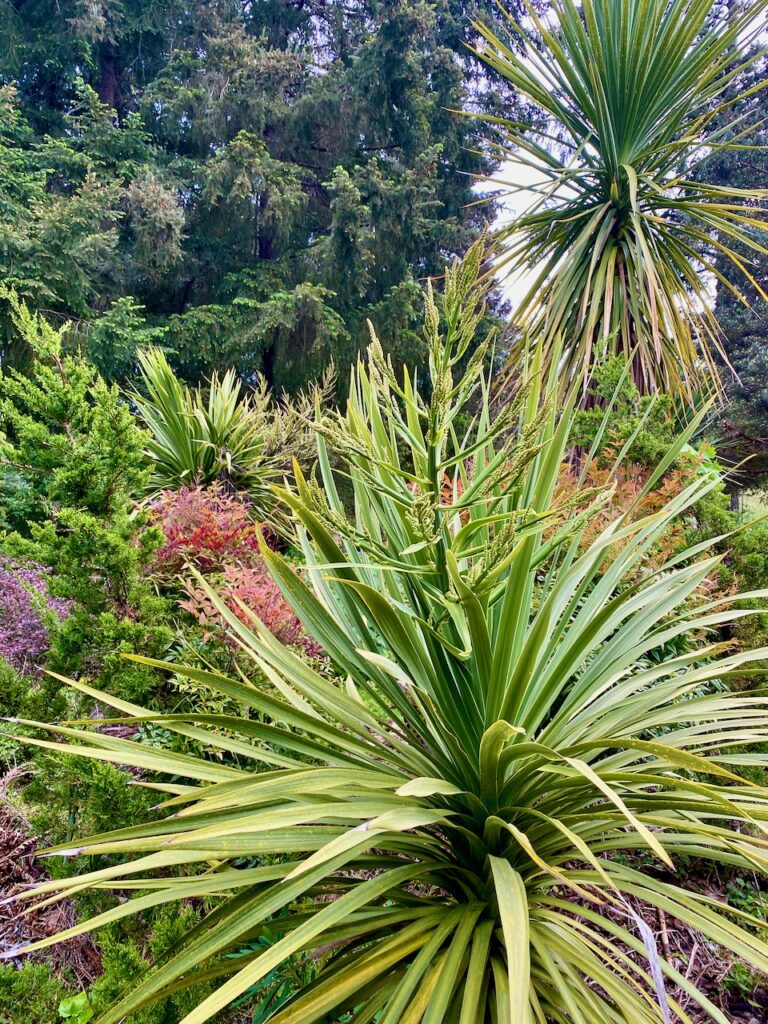
Although most of the current plants in the Xeriscape Garden were established between 2013 and 2016, new plants are added in the wet season to keep the garden fresh and interesting for our visitors. Perennials can live for a long time but most do not live forever, overtime they will need to be replaced. In some instances new varieties are chosen or a direct replacement is made.
Plants that can be pruned to reinvigorate their growth are maintained in the wet season by cutting back up to 2/3s the size of the plant or even completely down to the ground as needed. These types of shrubby perennials, requiring annual shaping or cutting back should be limited as they can create excessive physical maintenance.

